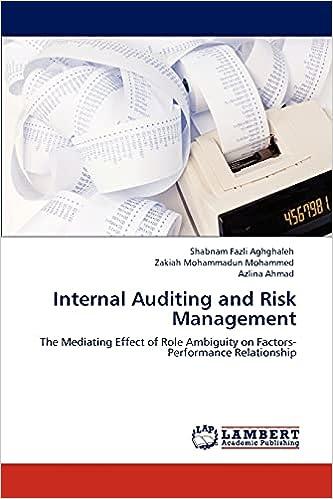Question
26. Company X paid Company Y $3.25 million for a new plant. During the same accounting period, Company X experienced the following changes in its
26. Company X paid Company Y $3.25 million for a new plant. During the same accounting period, Company X experienced the following changes in its balance sheet: Cash decreased by $360,000, Accounts Receivable increased by $323,200, Inventory increased by $277,700, Property, Plant, and Equipment increased by $754,800, and Bonds Payable increased by $3 million. The net cash flow provided by financing activities is:
A. An inflow of $754,800.
B. An outflow of $360,000.
C. An inflow of $3.25 million.
D. An inflow of $3 million.
27. Why is inventory reported as a current asset?
A. Inventory is not a current asset it is a noncurrent asset because inventory is often sold on account and not for cash.
B. Inventory is not reported as a current asset.
C. Inventory is reported as a current asset because it has been sold.
D. Inventory is reported as a current asset because it will be converted into cash within a year of the balance sheet date.
29. A company had 1,300,000 shares of $10 par value common stock outstanding. The amount of additional paid-in capital is $6,500,000, and Retained Earnings is $1,950,000. The company issues a 2-for-1 stock split. The market price of the stock is $11. What is the balance in the Common Stock account after this issuance?
A. $26,000,000
B. $27,300,000
C. $13,000,000
D. $19,500,000
30. A company lends its supplier $174,000 for 3 years at a 6% annual interest rate. Interest payments are to be made twice a year. Each interest payment will be for:
A. $5,220.
B. $10,440.
C. $15,660.
D. $31,320.
32. When the amount of a contingent liability cannot be reasonably estimated but its likelihood is probable, the company should:
A. record the amount of the liability times the probability of its occurrence.
B. exclude the information about the contingent liability from its financial statements and footnotes.
C. include a description in the notes to the financial statements.
D. record the amount of the liability as a long-term liability on the balance sheet.
Step by Step Solution
There are 3 Steps involved in it
Step: 1

Get Instant Access to Expert-Tailored Solutions
See step-by-step solutions with expert insights and AI powered tools for academic success
Step: 2

Step: 3

Ace Your Homework with AI
Get the answers you need in no time with our AI-driven, step-by-step assistance
Get Started


